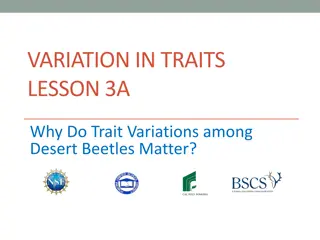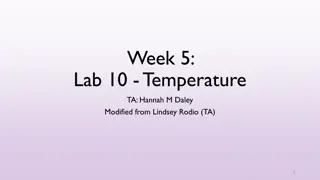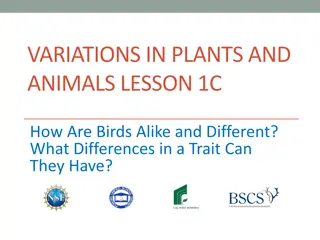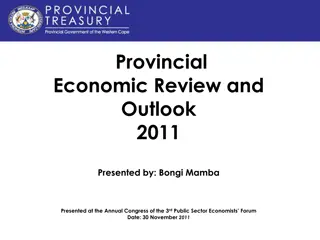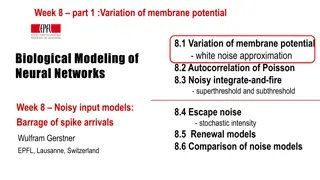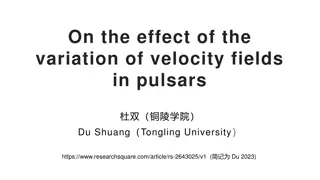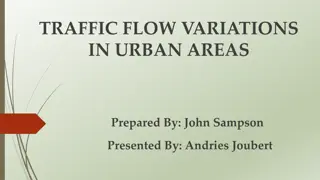Economic Analysis of Variations in VUoSA and MUoSA
The economic analysis compares Vector Use of System Agreement (VUoSA) and Model Use of System Agreement (MUoSA) to identify impacts on barriers to entry, competition, and operational efficiency in the retail electricity market, discussing findings and recommendations.
Download Presentation

Please find below an Image/Link to download the presentation.
The content on the website is provided AS IS for your information and personal use only. It may not be sold, licensed, or shared on other websites without obtaining consent from the author.If you encounter any issues during the download, it is possible that the publisher has removed the file from their server.
You are allowed to download the files provided on this website for personal or commercial use, subject to the condition that they are used lawfully. All files are the property of their respective owners.
The content on the website is provided AS IS for your information and personal use only. It may not be sold, licensed, or shared on other websites without obtaining consent from the author.
E N D
Presentation Transcript
Economic analysis of variations between the VUoSA and the MUoSA Toby Stevenson, Nives Matosin, Joanna Smith, Stuart Shepherd March 2014
Brief In anticipation of the Electricity Authority s (Authority s) forthcoming consultation paper on More Standardisation of the Use of Systems Agreement we were asked to: Observe the level of retail activity in the Vector network area relative to the national retail electricity market Identify variations between the Vector Use of System Agreement (VUoSA) and Model Use of System Agreement (MUoSA) and any impacts these variations have for barriers to retail entry and expansion in the market, and for promoting reliability and security or the efficient operation of the market Locate the analysis in (b) within the wider context of barriers to retail competition that exist or are likely to exist Undertake a qualitative assessment on the option of making the MUoSA in its current form mandatory 2
Current situation The current MUoSA + negotiated approach has been in operation since September 2012. The Authority s framework has been successful in encouraging distributors to seek improvements to the MUoSA. Through negotiations with retailers Vector has arrived at a VUoSA that will improve the operational and commercial workability of the MUoSA. 3
Findings VUoSA does not impair the three limbs of the statutory objective. VUoSA will promote greater reliability and operational efficiency. No impact from VUoSA on barriers to entry for small retailers. Enforcing a model would remove the ability for other parties to do what Vector and retailers have done. I.e. innovation and cooperation between retailers and distributors. Mandating would be the least preferable option for change now and would contradict several of the Authority s own Code amendment principles. The UoSAs may well converge as the distributors and retailers cherry pick the best attributes from the various negotiated UoSAs. 4
VUoSA v MUoSA Conducted a thorough clause by clause comparison of the 2 UoSAs. Step 1 Assessed whether each variation was material or not for each of the statutory objective limbs and whether variations were relevant. Step 2 Further assessed each of the material variations identified in step 1 for: o Impact on promoting competition o Impact on promoting reliability o Impact on promoting efficient operations. 5
Impact on promoting competition VUoSA does not have any impact on the ability of retailer to enter or expand. Requirement for the retailer to cover cost of communicating the first notification for a Planned services Interruption to Consumers is offset by Vectors intention to assume this as part of its transition from conveyance to interposed model. Vector provide a per event liability cap and annual aggregate liability cap wit the latter proportionate to the number of ICPs so the aggregate liability for retailers <5% falls. VUoSA provides provision of load control by parties other than retailer or distributor. Provides an option of giving the retailer a chance to trade its way out of financial trouble rather than terminating the agreement. 6
Impact on promoting reliability Significant emphasis on ensuring continued security and reliability of the network (12 variations). None of the related provisions had any detrimental impact on retail competition. Same definition of GEIP as MUoSA. More explicit reference to GEIP in a number of clauses. Improved reliability w.r.t. load control: will facilitate third party provision in a manner that doesn t interfere or damage load control systems and allows distributor to fulfil performance obligations. Clause 6.10 allows the distributor to obtain information from the retailers about consumer demand and energy to assist network planning (distributor will pay any costs). Distributor can take action to enhance system and network security. 7
Impact on promoting efficient operations Many of the variations are aimed at improving the workability of the agreement. Identified improvements to the MUoSA, adding new processes and responding to issues that have superseded the original MUoSA. Of note Vector is switching Auckland network from conveyance to interposed to the benefit of retailers: billing and payment processes and operational matters. Provision of embedded networks not included on the MUoSA are added to the VUoSA. Clarification around load control improves operational efficiency. Performance reports would only be published if requested by the retailer thereby reducing costs. VUoSA allows 15 day (vs 5 days in the MUoSA) to satisfy the requirement to increase or decrease the value of security or change the type of security. 8
Barriers to entry Potential barrier to entry (BTE) VUoSA v MUoSA No impact on BTE The challenge of obtaining competitive wholesale market cover. No impact on BTE Transmission constraints. The complexity of nodal pricing. Doesn t qualify as BTE No impact on BTE Market prudential requirements. No impact on BTE Network credit support. No impact on BTE Low Fixed Charge Tariff Regulations. Maybe a transaction cost but not a BTE. VUoSA no impact. Standardisation of lines tariffs. Maybe a transaction cost but not a BTE Standardisation of data format and file transfer protocols. VUoSA or lack of standardisation do not meet the definition of a BTE. Not clear how much it is a transaction cost. Standardisation of UoSAs. Maybe a transaction cost but not a BTE. The problem is the 29 lines companies and it is not clear that undoing Vector s work by mandating the MUoSA is the solution that matches the problem Significantly different UoSAs in each network area. Maybe a transaction cost but not a BTE Credit risk Please refer to our report for exact wording and meaning 9
A qualitative cost benefit analysis of mandating the MUoSA versus allowing the VUoSA See table on next slide 10
CBA of mandating MUoSA rather than VUoSA Cost or benefit of change to MUoSA Part 1 Services Net economic cost Clause 2.1 Net economic cost. Clause 2.2(d). Net economic cost Clause 2.4 Retailer s obligations in relation to Embedded Networks. Schedule 9: Embedded Network Provisions. Network security > third party access Load Management by third parties. Clause 6.11 Inclusion in Consumer Contracts. No economic benefit Clause 8. Service Performance Reporting Part II Payment obligations Net economic cost Distribution services Process and Process for Changing Prices Clause 9.3 Notice of price changes. Net economic cost Billing Information and Payment Clause 11.7: Wash-ups. Net economic cost. Prudential requirements Clause 12.6. EDB or Retailer to effect changes in security. Part III Operational Requirements Net economic cost Clause 14.8 Notification of interference, damage or theft: Part IV Other rights MUoSA likely to result in a net economic cost. Breaches and Events of Default Clause 20.4 Notification of Events of Default. Net economic cost likely. Clause 20.6 Insolvency Event.. Net economic cost. Clause 21.1 Either party may terminate this agreement: Net economic cost. Clause 23.1 Force Majeure Events. Net economic cost Clause 27.6 Distributor s limitation of liability. Please refer to our report for exact wording and meaning 11 No economic benefit Clause 27.8 Retailer s limitation of liability.
Assessment of a mandated MUoSA The VUoSA results in a net economic benefit relative to the MUoSA. There would be no benefit to the consumers in Vector s area of reverting to the MUoSA; nor to mandating any of the individual clauses in the MUoSA. The opportunity cost of mandating a UoSA is great based on examining benefits and/or detriments of mandating the MUoSA at a national level. Standardisation of the MUoSA may reduce transaction costs but this benefit is outweighed by the lost opportunity for continual innovation, adaption and sustainability. Mandating the MUoSA is the least preferable option in our view. 12
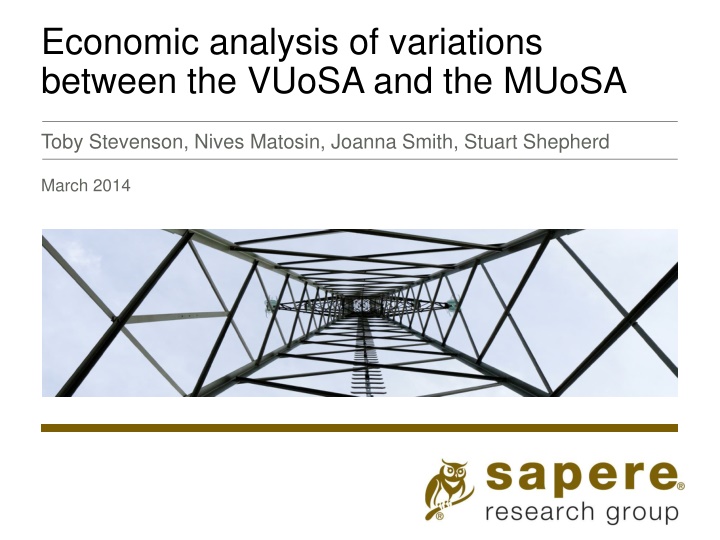



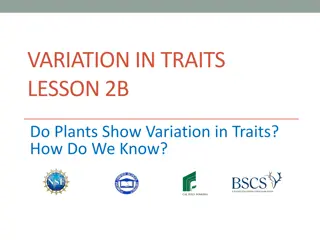

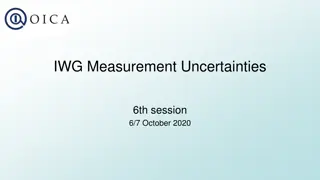
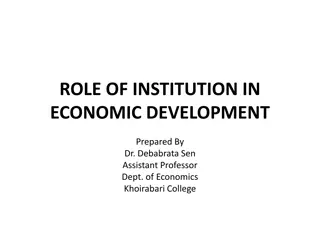

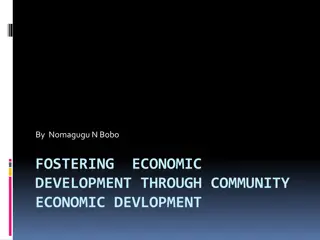

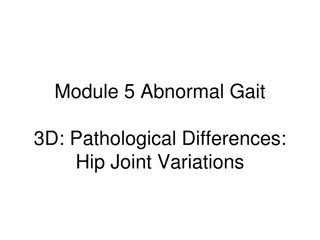

![Importance of Rock v. MWB [2018] UKSC 24 as Explained by Lord Sumption](/thumb/193348/importance-of-rock-v-mwb-2018-uksc-24-as-explained-by-lord-sumption.jpg)
